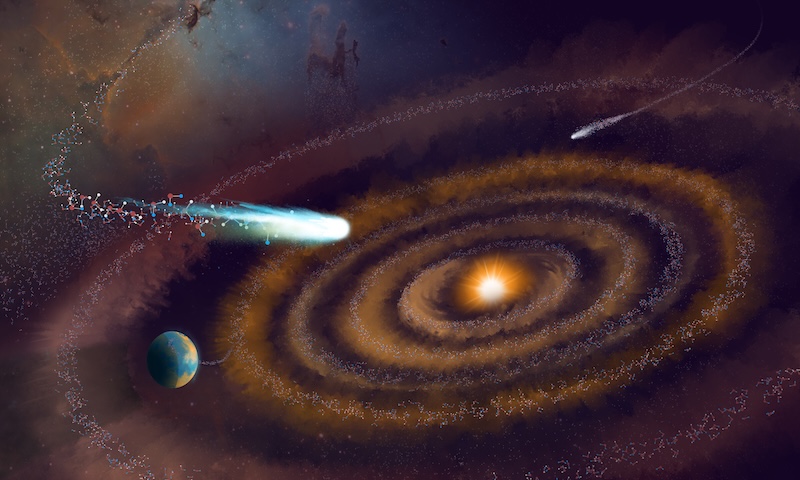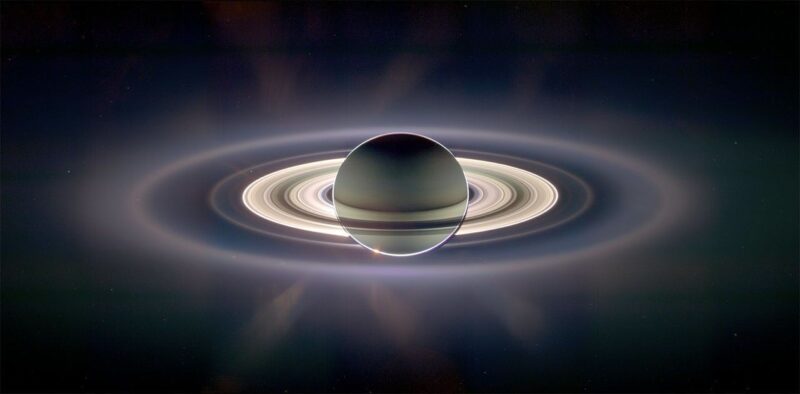View larger. | Artist’s concept of GJ 251 c, a potentially habitable world, a super-Earth type exoplanet only 18 light-years away. It orbits in the habitable zone of its red
EarthSky5- Page
View entire image here. | This is a selection of the new radio view of the Milky Way galaxy. Click here to see how it compares to an optical image
View at EarthSky Community Photos. | Joel Weatherly in Edmonton, Canada, captured Taurid meteors emanating from the constellation Taurus the Bull on November 11, 2020. Thanks, Joel! New research says
View larger. | In this image from NASA’s Galileo spacecraft – captured in 1997 – an active volcano erupts on the limb, or edge, of Jupiter’s moon Io. If it’s
Artist’s concept showing a 3-billion-year-old dead star, known as a white dwarf, accreting material from the remnants of its former planetary system. Gravitational instabilities caused a surviving planet to spiral
An artist’s impression of the V883 Ori planet-forming disk, along with some early comets. New results from the ALMA radio telescope revealed ancient water in the protoplanetary disk around its
The European Space Agency’s Mars Express orbiter took this stunning view of the ice-filled Korolev Crater on Mars in 2018. New research shows that microbes on Mars – either ancient
Mysterious gullies on Mars appear to have been dug, but by whom or what? Video via Faculty of Geosciences Utrecht University. Gullies are common on Mars. Flowing water likely created
This collage shows NASA/ESA Hubble Space Telescope images of 6 different galaxy clusters, with dark matter colored in blue. The dark matter in these images was only detected through its
The Cassini spacecraft caught the 6th planet from the sun and its rings like never before. In this image, Saturn’s rings are gloriously backlit with the sun blocked by the
-
 012024 in Review: Highlights from NASA in Silicon Valley
012024 in Review: Highlights from NASA in Silicon Valley -
 02Panasonic Leica Summilux DG 15mm f/1.7 ASPH review
02Panasonic Leica Summilux DG 15mm f/1.7 ASPH review -
 03From Polymerization-Enabled Folding and Assembly to Chemical Evolution: Key Processes for Emergence of Functional Polymers in the Origin of Life
03From Polymerization-Enabled Folding and Assembly to Chemical Evolution: Key Processes for Emergence of Functional Polymers in the Origin of Life -
 04How New NASA, India Earth Satellite NISAR Will See Earth
04How New NASA, India Earth Satellite NISAR Will See Earth -
 05And Thus Begins A New Year For Life On Earth
05And Thus Begins A New Year For Life On Earth -
 06Astronomy Activation Ambassadors: A New Era
06Astronomy Activation Ambassadors: A New Era -
07SpaceX launch surge helps set new global launch record in 2024















